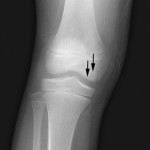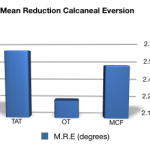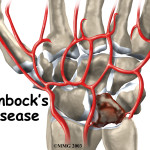If you are a sports physiotherapist who works with endurance athletes, in particular runners, I am certain that you would have had the pleasure of treating lower limb overuse injuries (?sarcasm). As you would know, they can frequently be a challenging condition to rehabilitate due in no small part to the reluctance of the athlete to stop training. This makes the prevention of these injuries, and identification of ‘high-risk’ athletes essential.
THE ROLE OF ORTHOTICS IN PREVENTION
Until recently, the true role of orthotic therapy in the prevention of lower limb overuse injuries was not clear. However, a randomised controlled trial published has shown the efficacy of orthotic therapy at reducing lower limb injuries in ‘at-risk’ military personnel during periods of heavy training (Franklyn-Miller et al 2010).
METHODS
The military personnel were assessed for biomechanical issues by plantar pressure software (Footscan 7.0 Gait 2nd Generation, RSscan International, who provided some funding for the research) and tiered into 3 risk groups; low, medium and high. Those identified as medium or high risk, which was defined as requiring one or more orthotic corrections.
A sample size of 400 was then randomised into two even group of 200. The intervention arm recieved D3D orthoses (which are a modular injection-molded device, available in different densities and arch profiles) whilst the control group received no intervention.
RESULTS
The authors examined the rates of diagnosis of anterior knee pain, iliotibial band syndrome, patellofemoral pain syndrome, medial tibial stress syndrome, chronic exertional compartment syndrome, achilles tendinopathy, or plantar fasciitis that required two or more days off training.
The results are promising. At the end of the 7 week training period the orthotic intervention group sustained 21 injuries in total, compared with 61 in the control group. This is effectively an absolute risk reduction of 0.49 from use of the orthoses. Another way of examining this is the intervention group suffered 1 injury per 4666 hours of training, compared with 1 per 1600 in the control. Pretty sweet huh?
LIMITATIONS AND CLINICAL IMPLICATIONS
Whilst this would research would suggest the efficacy of orthotic therapy at reducing rates of overuse injury, there are a few things to consider before you run out and put all your endurance athletes with poor dynamic foot posture in orthotics. There are a few small methodological issues (aren’t there always?) such as nil placebo control (difficult to do), some anthropometric differences between groups, and inability to blind assessors. However, the main issue I see is the issue with generalisability to our clinical practice. The assessment and orthotic prescription does not reflect widespread clinical standards (do you have RScan technology in your practice?).
Also, the study population (new-entry trainee military personnel) is likely to be significantly different to an elite (or even semi-elite) athletic population. Therefore, I would love to see the study repeated in this population.
Regardless of all my nay-saying this is some good research showing the efficacy of orthotic therapy at reducing overuse injuries in a population undergoing heavy training. This would give some weight behind a clinical decision to put an athlete with dubious foot posture about to undergo an increase in training load into orthotics.
What are your experiences with orthotics and the prevention of lower limb overuse injuries? Let me know in the comments or catch me on Facebook or Twitter
If you require any sports physiotherapy products be sure check out PhysioSupplies (AUS) or MedEx Supply (Worldwide)
REFERENCE
Franklyn-Miller A, Wilson C, Bilzon J, McCrory P. Foot Orthoses in the Prevention of Injury in Initial Military Training : A Randomized Controlled Trial. Am J Sports Med 2011 39: 30
Related Posts
Comments









I agree with your point saying the main limitation with this study is how we can generalise the findings to be used in an everyday clinical setting.
Also, there now seems to be a shift away from the idea that pronation is a bad thing when running – and that being flat footed doesn’t neccesarily increase a runner’s chances of injury.
Its a very interesting topic and worthy of exploring further.
Check out this link talking about a NY Times article on orthotics (posted just before this post): http://www.runblogger.com/2011/01/interesting-article-on-orthotics-by.html
And this is a must read for all Physios and runners – discussion on new trends in prevention and treatment of running injuries: http://www.runblogger.com/2011/02/new-trends-in-prevention-and-treatment.html
Happy Running.
In addition, my personal view on the use of orthotics is they are in the same boat as casts and slings – useful for protection and support in the shirt term, then should be discarded to allow for increases in strength and mobility to naturally support those structures. e.g. for the foot: intrinsic foot exercises, balance and proprioception, increased hip control.
Final word…Dr Benno Nigg’s most recent publication, Biomechanics of Sports Shoes would be worth reading. http://www.americaspodiatrist.com/2011/02/biomechanics-of-sport-shoes-the-disturbing-truth-about-running-shoes-inserts-and-foot-orthotics/